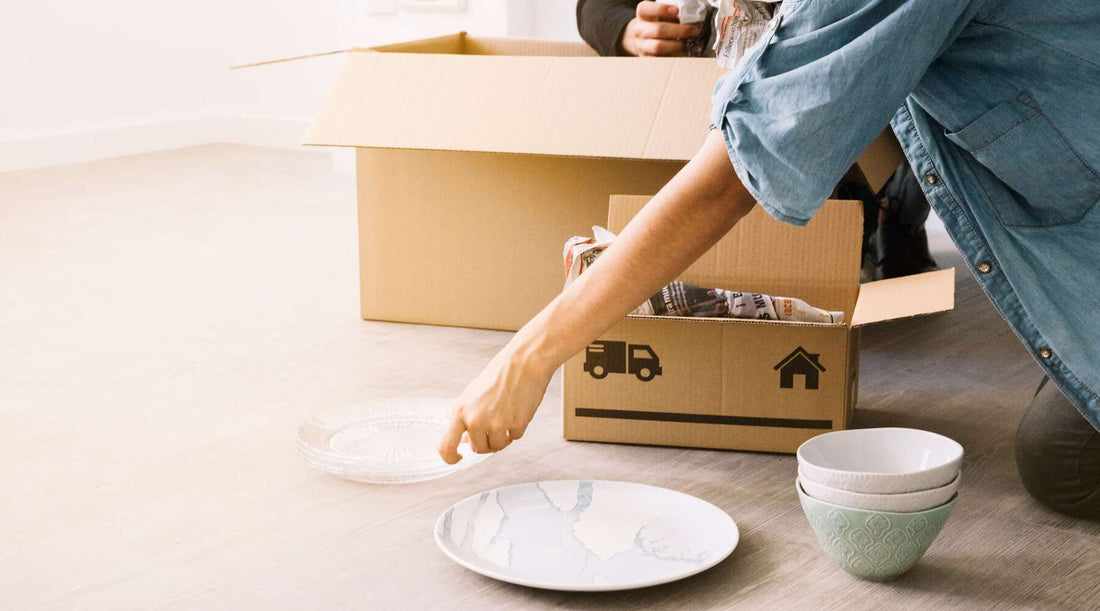Move Now! Learn How to Pack Dishes for Moving Like a Pro

Moving can be both an exciting and stressful time. One of the most daunting tasks is figuring out how to pack your dishes safely. You don't want to arrive at your new home with broken plates and shattered glasses. Luckily, with a few simple tricks and the right supplies, you can pack your kitchen items like a pro. This guide will help you ensure that all your fragile dishes make the move unscathed.
Packing Materials Needed
Before you get started, it's essential to gather all the materials you'll need for packing your dishes. Having everything on hand will make the process faster and more efficient.
- Boxes or Bags - The first thing you need is sturdy boxes. Choose boxes specifically designed for moving, as they are stronger and more durable.

- Wrapping Paper - You’ll need plenty of wrapping paper to protect each dish individually. Wrapping paper is specially designed to cushion delicate items and prevent scratches and breaks.
The most commonly used wrapping paper include newspapers, bubble wrap, and honeycomb wrapping paper. Traditional newspaper can be used for extra padding but be mindful that it can leave ink stains. Bubble wrap is an excellent choice for providing a thick layer of protection around your dishes. For a more eco-friendly option, consider honeycomb wrapping paper from companies like MUNBYN. This innovative product offers the same level of protection as bubble wrap but is biodegradable and better for the environment.
- Scissors and Utility Knives - These tools are necessary for cutting the wrapping paper and opening boxes. Ensure they are sharp enough to make precise cuts but handle them carefully to avoid accidents.
- Labels and Makers - Proper labeling is crucial when moving. Mark each box with its contents and note if the items inside are fragile. Munbyn offers 4x6 shipping labels that are perfect for this job. These labels can be written on or printed using a thermal printer, which is a popular feature among small business owners for its efficiency and clarity.
- Solid Packing Tape and Dispenser - Secure your boxes with strong packing tape to ensure they don’t open during transit. A dispenser will help you apply the tape more smoothly and efficiently. Munbyn also offers high-quality packing tape and tape dispensers that can make this task even easier.
- Foam - Foam sheets or peanuts can provide additional cushioning in the box. They are especially useful for filling gaps between items and the walls of the box, adding an extra layer of security.
How to Pack Dishes for Moving
Packing dishes can seem like a huge task, but with the right approach, it’s entirely manageable. Here are some tips to help you:

- Start Early: Begin packing your dishes well before your moving date. This allows you to take your time and do it carefully.
- Use Ample Cushioning: Line the bottom of each box with crumpled paper or foam. This creates a soft base for your dishes to rest on.
- Wrap Each Dish Individually: Use wrapping paper or bubble wrap to cover each dish completely. This prevents direct contact between the dishes, reducing the risk of them scratching or breaking one another.
- Pack Vertically: Place plates and other flat items vertically rather than stacking them horizontally. This minimizes the chance of them cracking under their own weight.
- Fill Gaps: Use foam or crumpled paper to fill any empty spaces in the box. This keeps the dishes from shifting during transport.
How to Pack Cups and Glasses
Cups and glasses are delicate and require special care when packing too. Follow these tips to make sure they arrive intact:

- Choose the Right Box: Use boxes specifically designed for glasses and cups, often referred to as cell boxes. These have individual compartments that provide added protection.
- Wrap Carefully: Wrap each cup or glass individually with bubble wrap or honeycomb wrapping paper. Pay special attention to handles and stems, wrapping them with extra layers for added protection.
- Stuff Interiors: Fill the inside of each cup or glass with crumpled paper to prevent them from collapsing under pressure.
- Layer Strategically: Place heavier items on the bottom and lighter ones on top. This ensures that the lighter, more fragile items aren’t crushed.
- Use Dividers: If you’re using a regular box, insert cardboard dividers to create sections. This reduces the risk of items bumping into each other.
- Seal and Label: Once packed, seal the box securely with packing tape and label it. Then include a description of the contents for easy identification.
How to Pack Appliances
Kitchen appliances, though not as fragile as dishes, still require careful packing. Here’s how to go about it:
- Clean and Dry: Make sure all appliances are clean and dry before packing. Moisture can cause mold and damage over time.
- Disassemble if Possible: Take apart any removable parts and wrap them separately. This makes packing easier and reduces the risk of parts getting lost or damaged.
- Use Original Packaging: If you still have the original boxes and packaging materials, use them. They are custom-fitted to protect the appliance.
- Wrap Cords Separately: Securely wrap the cords and place them in a separate bag. Tape the bag to the appliance to keep everything together.
- Cushion Well: Use foam or bubble wrap to provide ample cushioning around the appliance. Fill any gaps in the box with crumpled paper or foam to prevent movement.
Extra Tips for Packing Fragile Items
When it comes to packing other fragile items, a few additional tips can go a long way:
- Use Smaller Boxes - Smaller boxes are less likely to be overloaded, reducing the risk of them breaking open.
- Double Box for Extra Protection - Place delicate items in a smaller box first, then put that box inside a larger one with extra padding around it.
- Label Clearly - Always mark boxes with fragile items clearly. This alerts anyone handling the boxes to take extra care.
- Keep It Light - Don’t overfill boxes with heavy items. Spread the weight evenly to make them easier to carry.
- Consider Insurance - If you’re using a moving company, inquire about insurance options for your fragile items.
*anchor-1
Final words
Packing your dishes for a move doesn’t have to be a nerve-wracking experience. With the right materials and a little know-how, you can ensure that all your precious kitchenware arrives at your new home safe and sound. So start early, take your time, and follow these tips to pack like a pro!




